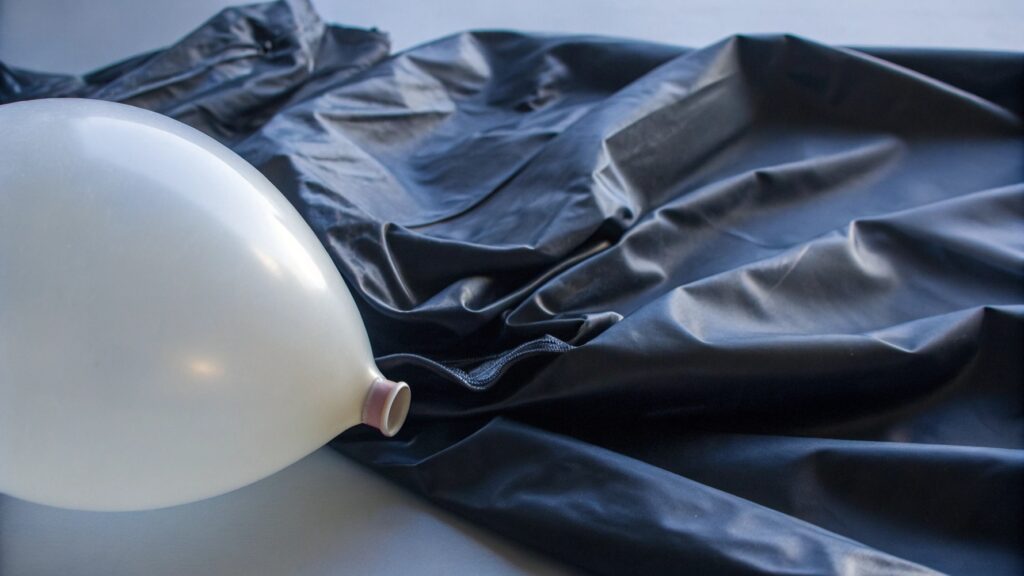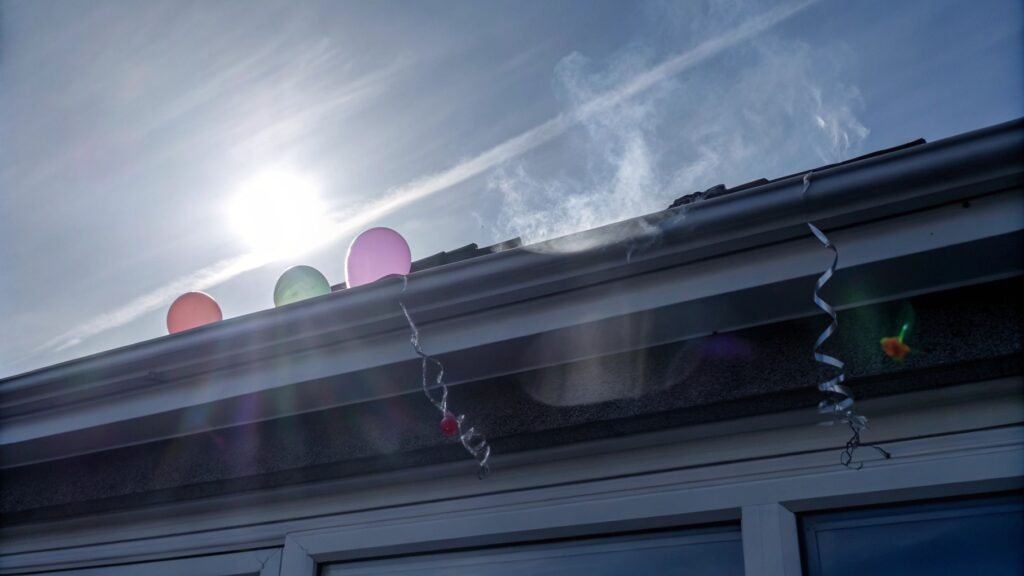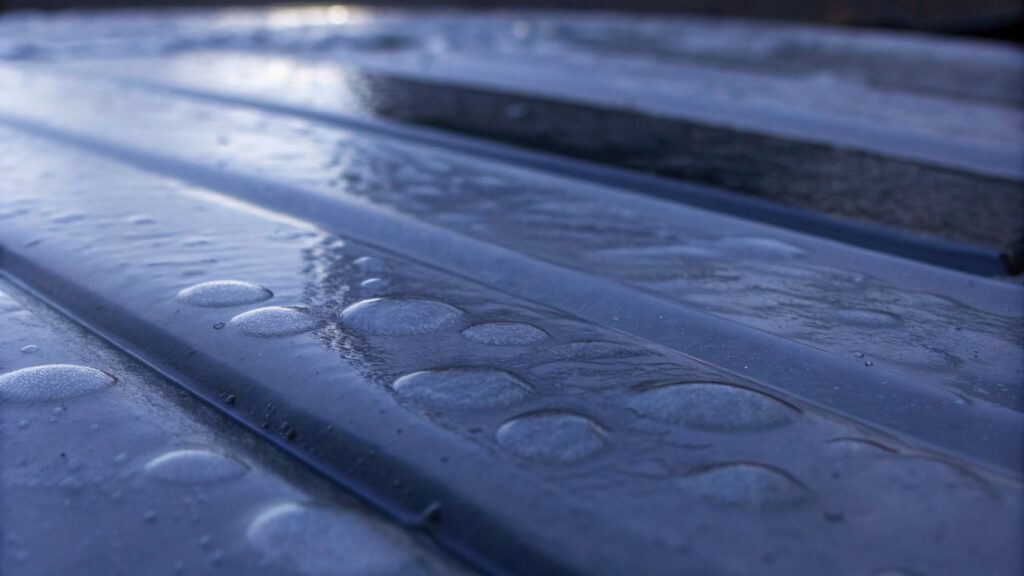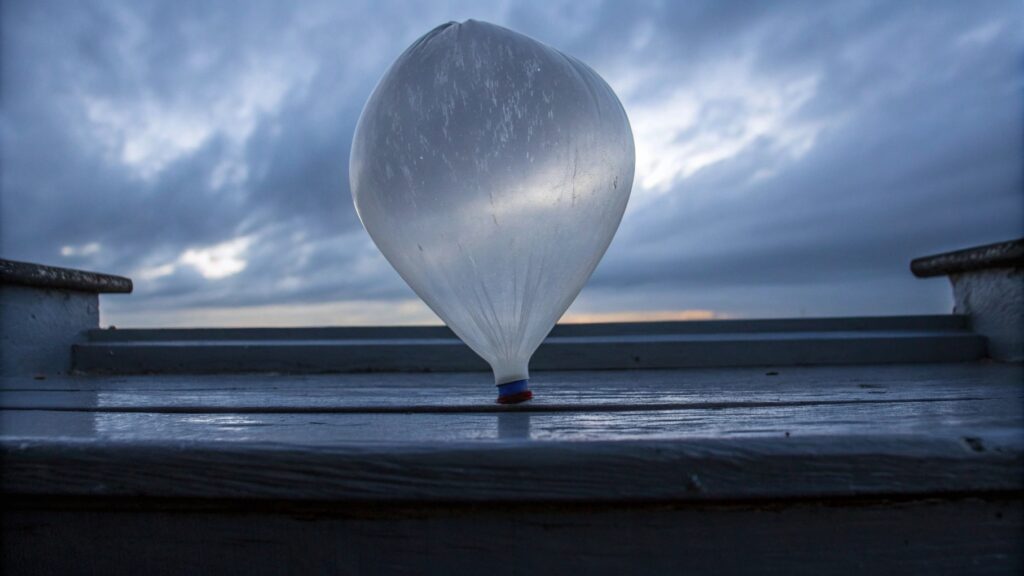What causes latex balloons to pop easily?
Do your latex balloons pop too soon, leaving you with a sudden bang and a mess? It's frustrating when your decorations don't last. Find out what makes them burst, so you can make your celebrations more colorful for longer.
Latex balloons can pop easily due to various factors like overinflation1, material defects2, extreme temperatures3, sharp objects4, and poor quality manufacturing5. Understanding these causes helps ensure your balloons stay inflated, keeping your events vibrant and fun.

I have seen many balloons pop throughout my years in this industry. It usually comes down to a few key reasons. Knowing these reasons can help you stop it from happening again.
Why do latex balloons burst without warning?
Have you ever had a balloon burst for no clear reason, right in the middle of a party? It can be surprising and annoying. There are often hidden reasons that make balloons burst without warning.
Latex balloons can burst without warning due to internal stress6 from manufacturing, tiny unseen punctures, quick temperature changes, or microscopic material weaknesses. These factors build up, causing a sudden and unexpected pop.

When a balloon pops without warning, it might seem random. But it is not. Many factors work together. One is the quality of the latex itself. I always recommend 100% natural latex7 balloons. These balloons usually have better elasticity8. This means they can stretch more without breaking. Poor quality latex can have thin spots or air bubbles. These weak spots are like ticking time bombs. They can give way under normal pressure. Over time, constant stress on the balloon material also plays a part. Every time you inflate a balloon, the latex stretches. This stretching causes tiny tears at the molecular level. These tears are too small to see. But they add up. Eventually, a small change in pressure or temperature can make these weakened spots burst. Think about how a rubber band wears out over time. It eventually snaps, even if you are not pulling it hard. Balloons are similar. Also, static electricity9 can play a role. When balloons rub against each other or other surfaces, they build up static. A strong static charge can put extra stress on the balloon's surface. This can cause it to pop, especially if it already has a weak spot. Lastly, tiny, unseen particles or dust can stick to the balloon. If these particles are sharp, they can slowly cut into the latex. This makes a weak point that eventually bursts.
| Factor | Description | Impact on Bursting | Prevention |
|---|---|---|---|
| Material Quality | Low-grade latex or synthetic blends have inconsistent thickness and elasticity8. | Creates weak spots that fail under normal pressure or minor stress. | Use 100% natural latex7 balloons from trusted suppliers. Look for certifications. |
| Micro-tears | Invisible damage from stretching during inflation or handling. | Accumulate over time. Leads to sudden failure when external factors are introduced. | Inflate slowly. Avoid overstretching. Handle balloons carefully. |
| Static Buildup | Friction between balloons or surfaces creates an electrical charge. | Concentrated stress on the surface. Accelerates failure at weak points. | Use anti-static sprays or coatings. Avoid rubbing balloons together. |
| Invisible Punctures | Tiny holes from dust, sharp edges, or rough surfaces10 during storage or transport. | Compromises structural integrity. Leads to unexpected, rapid deflation or bursting. | Store balloons in clean, protective packaging. Check surfaces for sharp edges before use. |
| Temperature Fluctuations | Sudden changes cause the air inside the balloon to expand or contract rapidly. | Rapid expansion puts stress on the latex. Can make already weak spots burst. | Keep balloons in a stable, moderate temperature environment. Avoid direct sunlight11. |
Are there common environmental factors making latex balloons pop?
Do you wonder if your surroundings contribute to your balloons popping? Environmental factors often play a big part. Knowing what these are can help you keep your balloons inflated longer.
Common environmental factors that make latex balloons pop include extreme temperatures3, direct sunlight11, sharp objects4 in the area, and rough surfaces10. These elements put stress on the latex, weakening it and leading to unexpected bursts.

I've seen it many times. The environment can be tough on balloons. Let me tell you about some common issues. First, direct sunlight11 and heat are big problems. Latex balloons are made of natural rubber. When sunlight hits them, the UV rays break down the latex. This makes it lose its elasticity. High heat also makes the air inside the balloon expand. This puts more pressure on the latex. It is like stretching a rubber band in the sun. It will snap faster. Our factory is very particular about keeping balloons in a cool, dark place before shipping. Second, rough surfaces and sharp objects are obvious dangers. Tree branches, rough walls, or even crumbs on a table can prick a balloon. Even a small piece of dust can have a sharp edge. Always be careful where you put your balloons. Keep them away from anything sharp. Third, wind and strong air currents can also cause problems. If balloons rub against each other or other surfaces in windy conditions, they create friction. This friction generates heat and static electricity9. Both can weaken the latex. High winds can also push balloons into sharp objects. Lastly, extreme cold can also cause issues. When it is very cold, the air inside the balloon contracts. This makes the balloon shrink. If you then bring it into a warm room, the air expands quickly. This sudden expansion puts a lot of stress on the latex. It can cause it to pop, especially if the latex is already a bit brittle from the cold.
| Environmental Factor | Description | Impact on Balloons | Prevention |
|---|---|---|---|
| Direct Sunlight | UV rays from the sun and intense heat. | Degrades latex, making it brittle. Causes internal air to expand, increasing pressure. | Avoid displaying balloons in direct sunlight11. Use lighter colors which absorb less heat. |
| Extreme Temperatures | Both very hot and very cold conditions. | Heat causes expansion and weakening. Cold makes latex brittle. Rapid changes cause stress. | Keep balloons in a stable, moderate temperature range (20-24°C). Avoid extreme fluctuations. |
| Sharp Objects | Pins, nails, splinters, rough edges on furniture, or even tiny unseen particles12. | Puncture the latex, causing rapid deflation or sudden bursting. | Inspect the area for sharp objects. Avoid placing balloons near potential hazards. |
| Rough Surfaces | Brick walls, textured ceilings, uneven floors, or abrasive materials. | Create friction and tears when balloons rub against them. Compromise the integrity of the balloon. | Use smooth surfaces for display. Place a protective layer between balloons and rough areas. |
| Wind & Air Currents | Strong gusts or drafts from fans or vents. | Cause balloons to rub together or against objects, generating friction and heat. Can push into hazards. | Secure balloons in sheltered areas. Avoid direct exposure to strong air currents. Check for drafts. |
What material defects contribute to latex balloons easily rupturing?
Have you ever questioned if the quality of the balloon itself is to blame for it popping? Material defects are a real issue. They can make even the best-handled balloon rupture easily.
Material defects contributing to latex balloons rupturing easily include uneven thickness, impurities in the latex, micro-fractures from the manufacturing process, and poor elasticity due to low-grade raw materials. These flaws create weak spots that burst under normal stress.

I know from my experience in manufacturing that material defects are a silent killer for balloons. Even if you handle them with care, internal flaws can lead to premature bursting. One major issue is uneven thickness. During production, if the latex is not spread evenly, some areas end up thinner than others. These thin spots are much weaker. They cannot handle the same pressure as the thicker parts. It is like having a weak point in a chain. It will break there first. Another common defect is the presence of impurities in the latex. Sometimes, small foreign particles or unmixed clumps of material get into the latex compound. These impurities disrupt the natural structure of the rubber. They create stress points or tiny voids. When the balloon inflates, these areas are put under immense strain. They are much more likely to tear or rupture. We at AIHUA BALLOON use 100% natural latex to avoid these issues. Also, poor elasticity is a significant problem. High-quality latex is very stretchy and resilient. It can expand and contract many times without losing its strength. But if the raw materials are low-grade or if the curing process is not done right, the latex will not be as elastic. It becomes stiff and brittle. This means it cannot absorb the stress of inflation. It will reach its breaking point much faster. Lastly, micro-fractures from the manufacturing process, particularly at the neck or tie-off point, can weaken the balloon even before it is used.
| Material Defect | Description | Impact on Balloons | Prevention/Identification |
|---|---|---|---|
| Uneven Thickness | Inconsistent distribution of latex during molding, resulting in thinner and weaker sections. | Thinner areas stretch excessively and burst under normal inflation pressure or minor stress. | Choose balloons from manufacturers with strict quality control. |
| Impurities | Foreign particles, unmixed latex clumps, or air bubbles embedded within the latex material. | Create stress points and voids. Significantly reduce the balloon's ability to stretch without tearing. | Select balloons made from 100% pure, natural latex. Avoid synthetic blends. |
| Poor Elasticity | Latex material that lacks sufficient stretch and resilience due to low-grade raw materials or improper curing. | Leads to premature bursting as the balloon cannot expand adequately without reaching its breaking point. | Look for certifications like ISO9001 for quality management processes. |
| Micro-fractures | Tiny, often invisible cracks or weaknesses, especially around the neck or edges, from the manufacturing or handling process. | Propagate quickly under pressure. Causes sudden and unexpected rupturing, even when not overinflated. | Visually inspect balloons before inflation. Handle with care. |
| Aging of Latex | Degradation of the latex material over time, especially when exposed to light, heat, or ozone during storage. | Makes the latex brittle and less pliable. Increases susceptibility to bursting even with gentle handling. | Purchase fresh stock. Check manufacturing dates. Store in cool, dark places. |
How does overinflation affect the likelihood of a latex balloon popping?
Have you ever wondered if putting too much air in a balloon makes it pop faster? Overinflation is a very common reason. It majorly affects how likely your latex balloon is to pop.
Overinflation significantly increases the likelihood of a latex balloon popping because it stretches the material beyond its elastic limit, causing extreme tension and microscopic tears. This weakens the latex, making it highly susceptible to bursting from even slight additional pressure or environmental factors.

I have learned that overinflation is one of the most common mistakes people make. It guarantees a short life for your balloon. When you inflate a latex balloon, the material stretches. This is normal. Good quality latex is very elastic. It can stretch a lot. But every material has its limit. When you push past this limit, problems begin. Think of it like a rubber band. You can stretch it a lot, but if you pull it too far, it snaps. A balloon is the same. Overinflating a balloon puts enormous tension on the latex. The balloon becomes very firm. It loses its soft, pliable feel. This means the latex molecules are already at their breaking point. There is no room for more stretching. Any small amount of extra pressure will cause it to burst. This extra pressure can come from many places. It could be a slight temperature increase, a small bump, or even the natural expansion of air due to changing atmospheric pressure. Also, overinflation amplifies any existing defects. If there is a thin spot or an impurity, overinflation will make that weak point fail much faster. It becomes the exact spot where the balloon will pop. Always inflate balloons to their recommended size. They should feel slightly soft to the touch, not drum-tight. This gives the latex some room to move and adapt.
| Aspect of Overinflation | Description | Impact on Balloon | Prevention |
|---|---|---|---|
| Exceeding Elastic Limit | Pushing the latex material beyond its maximum stretch capacity. | Causes irreversible damage to the latex structure. Leads to immediate bursting or significantly weakened state. | Inflate balloons to their recommended size. Leave them slightly pliable. |
| Increased Internal Pressure | Packing too much air or gas into the fixed volume of the balloon. | Builds extreme tension on the balloon's surface. Magnifies stress on any weak points or existing defects. | Use balloon sizers or measuring tools to ensure correct inflation. |
| Thinning of Latex | As the balloon expands excessively, the latex material gets stretched thinner and thinner. | Makes the balloon highly vulnerable to punctures, abrasions, or even internal pressure changes. | Avoid inflating until the balloon feels taut or appears pear-shaped. |
| Loss of Pliability | An overinflated balloon loses its soft, flexible feel and becomes stiff and drum-like. | Unable to absorb external shocks or adapt to temperature changes without bursting. | Always ensure the balloon retains some softness for resilience. |
| Amplified Defects | Existing material flaws, such as thin spots or impurities, become magnified under extreme tension. | The balloon will almost certainly burst at these already compromised points when overinflated. | Good quality control in manufacturing is key, but proper inflation helps too. |
Conclusion
Balloons pop due to common reasons like poor quality, too much air, and bad environments. Choosing high-quality, 100% natural latex balloons and handling them carefully helps them
-
Learn about the risks of overinflation and how to avoid popping your balloons prematurely. ↩
-
Understand the types of material defects that can lead to balloon failures and how to choose better options. ↩
-
Discover how temperature fluctuations can impact the integrity of your balloons. ↩ ↩
-
Find out which common items can puncture your balloons and how to protect them. ↩ ↩
-
Learn how to identify low-quality balloons to ensure your decorations last longer. ↩
-
Explore the factors that contribute to internal stress and how to minimize it. ↩
-
Discover why 100% natural latex balloons are a better choice for your events. ↩ ↩
-
Understand how elasticity affects balloon performance and longevity. ↩ ↩
-
Learn about the role of static electricity in balloon popping and how to manage it. ↩ ↩
-
Understand which surfaces can damage your balloons and how to display them safely. ↩ ↩
-
Learn why keeping balloons out of direct sunlight is crucial for their longevity. ↩ ↩ ↩ ↩
-
Learn about the risks posed by tiny particles and how to keep your balloons safe. ↩
